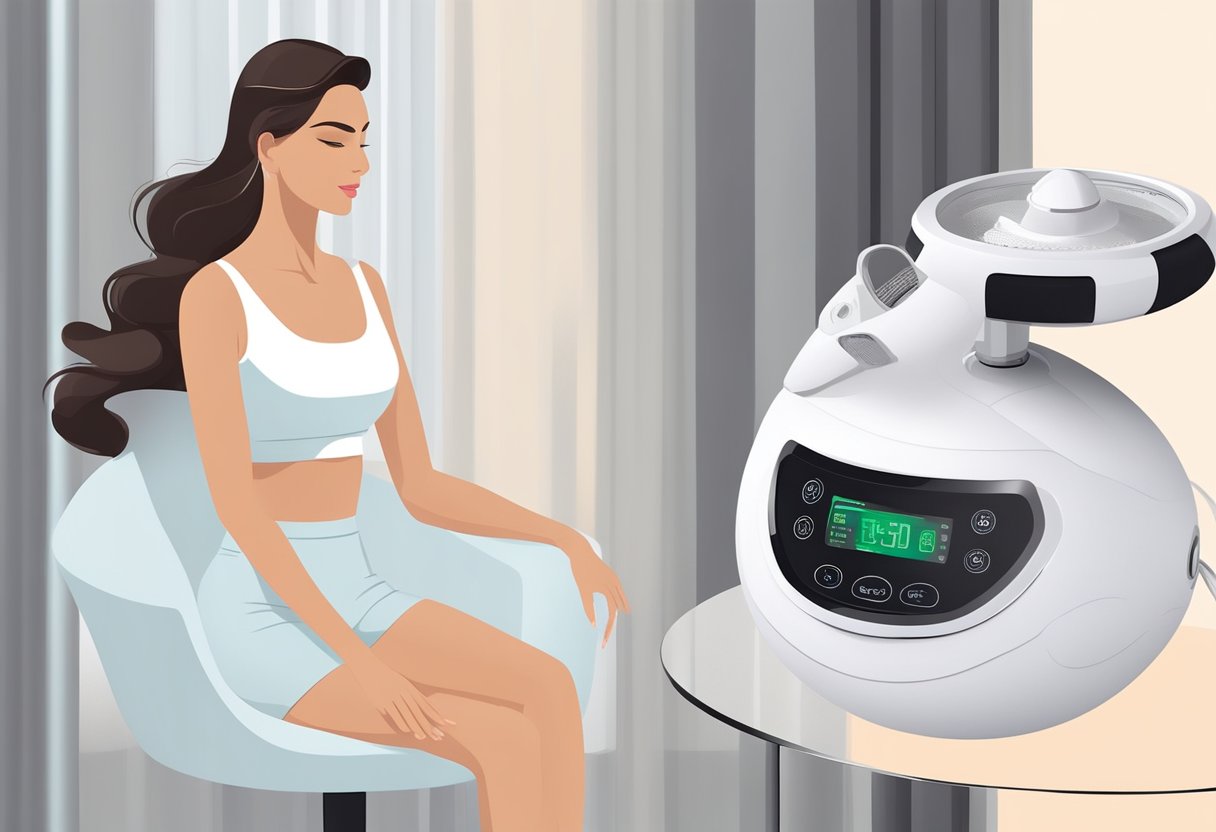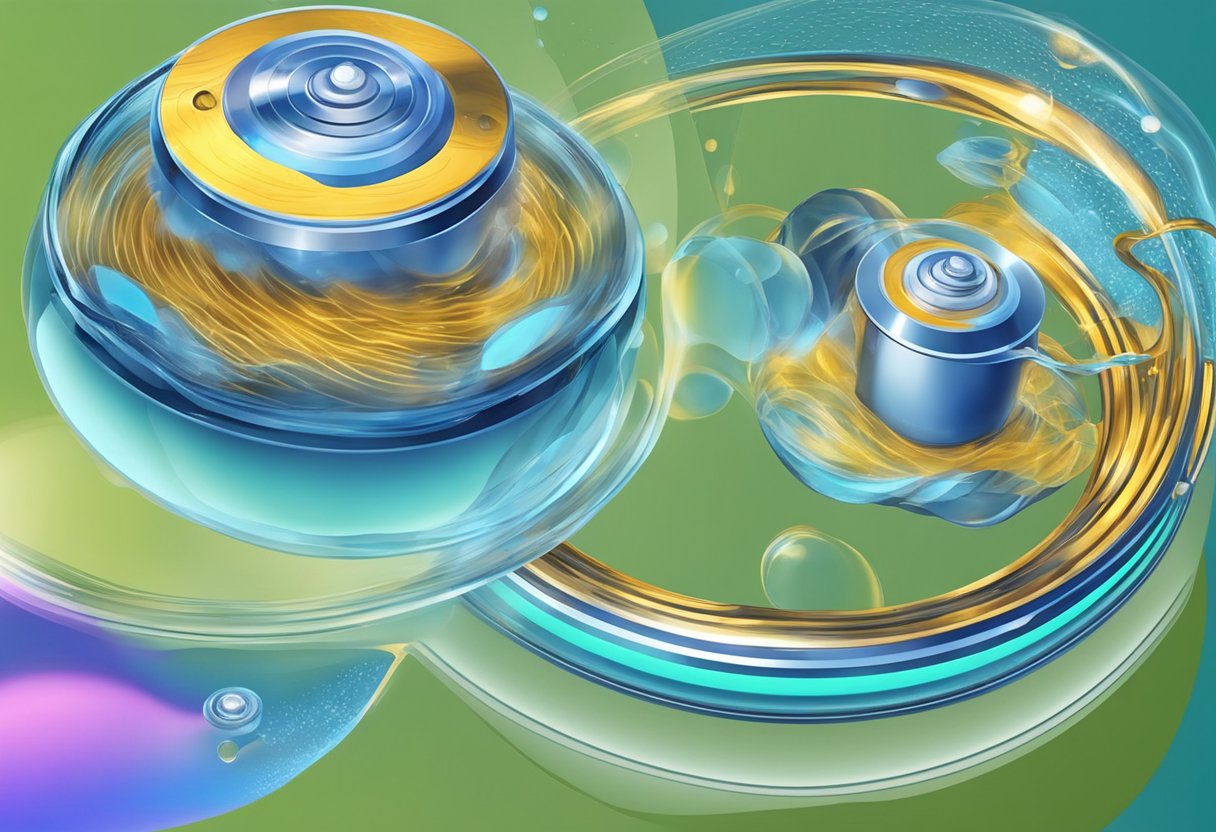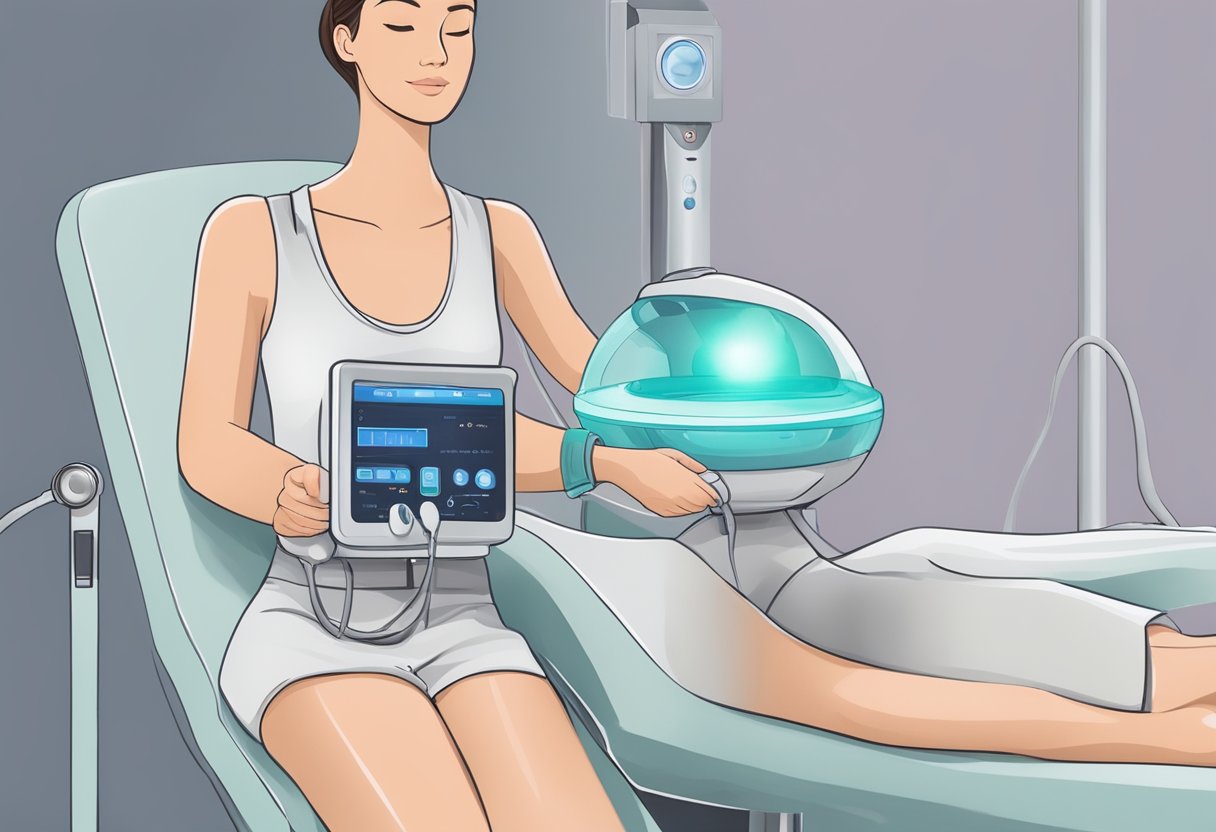Ultrasonic Cavitation Machine: Unveiling the Science of Non-Invasive Fat Reduction
Ultrasonic cavitation machines are at the forefront of non-invasive body contouring technology. They utilize high-frequency sound waves to create rapid vibrations in the fat cells under the skin. This process leads to the formation of micro-bubbles within the adipose tissue which then implode, causing the fat cells to break down into a liquid substance. This substance is then naturally eliminated by the body through lymphatic drainage, essentially ‘melting away’ fat without the need for surgery.

The popularity of ultrasonic cavitation stems from its ability to target localized fat deposits that are often resistant to diet and exercise. The procedure is painless, carries minimal risks, and requires no downtime, making it an attractive option for individuals seeking an alternative to more invasive fat reduction methods like liposuction. Typically, multiple treatment sessions are recommended for optimal results, and while it is not a weight-loss solution, ultrasonic cavitation can be an effective way to reduce inches and improve body shape.
It’s important to approach ultrasonic cavitation with realistic expectations. The process is most effective when combined with a healthy lifestyle, as maintaining proper diet and exercise regimes can prolong and enhance the effects of the treatment. Qualified practitioners should perform the procedure, and clients are usually advised to hydrate well before and after sessions to facilitate the flushing out of the liquefied fat. While results can vary from person to person, many experience measurable reductions in targeted areas, contributing to its growing use in beauty and wellness clinics.
Basics of Ultrasonic Cavitation Machines

Ultrasonic cavitation machines are devices designed to help reduce body fat through low-frequency sound waves. The technology is non-invasive and is commonly used in body contouring treatments.
Principles of Operation
The operation of ultrasonic cavitation machines revolves around producing sound waves that create bubbles in a liquid surrounding fat cells in the body. These bubbles expand and burst, causing the fat cells to break down. The body then processes these fat cells through the lymphatic and urinary systems.
Main Components and Design
Ultrasonic cavitation machines consist of the following main components:
- Power Supply: Provides energy to generate ultrasonic waves.
- Transducer: Converts electrical energy into sound waves.
- Handpiece: Serves as the interface with the body, directing the sound waves to the target area.
Design-wise, these machines are typically compact, and the handpiece is ergonomically developed for ease of use and precise application.
Types of Ultrasonic Cavitation Machines
There are several types of ultrasonic cavitation machines, distinguished by their power rating, frequency of the ultrasound waves, and the number of handpieces. Examples include:
- Portable models: Smaller in size, suitable for personal use or small clinics.
- Professional models: Equipped with more power and features for clinical settings.
The machines might further vary by their intended use, such as facial versus body treatments, highlighting their versatility in application areas.
Benefits and Effectiveness

Ultrasonic cavitation machines offer a non-invasive alternative to liposuction, intended to reduce localized fat with clinical precision.
Clinical Efficacy
Ultrasonic cavitation is backed by clinical studies that indicate its effectiveness in fat reduction. It is reported that low-frequency ultrasound waves create bubbles in the interstitial fluid surrounding fat cells. As these bubbles collapse, they cause the fat cells to break down, which can then be metabolized by the body.
- Evidence: Clinical trials have shown a measurable reduction in fat thickness after a treatment protocol.
- Safety: Few side effects are associated with this technology when used correctly.
Applications in Body Contouring
This technology has demonstrated meaningful results in body contouring. It targets adipose tissue, making it a suitable option for individuals seeking to redefine their physique without invasive surgery.
- Target Areas: Commonly treated areas include the abdomen, thighs, and arms.
- Outcomes: Users often report a more contoured silhouette as a result of decreased circumference in the treated areas.
Advantages Over Alternative Treatments
Ultrasonic cavitation presents several advantages compared to traditional fat-reduction methods.
- Downtime: Virtually no downtime, allowing patients to return to normal activities immediately.
- Pain: The procedure is generally painless, described by patients as a comfortable experience.
- Cost: Often more affordable than surgical alternatives like liposuction.
- Accessibility: Non-surgical nature makes it available to a wider range of clients.
Procedure and Safety

This section outlines the essential aspects of pre-treatment considerations, the ultrasonic cavitation process itself, and vital safety measures as well as contraindications to be aware of.
Pre-Treatment Considerations
Before undergoing ultrasonic cavitation, it is important that clients undergo a thorough assessment to determine suitability for the treatment. A detailed medical history should be taken, focusing on:
- Medical conditions: Including liver dysfunction, heart disease, or pacemakers.
- Medications: Blood-thinning medications may increase the risk of bruising or bleeding.
- Expectations: Clients should have realistic expectations about the results of the treatment.
The Ultrasonic Cavitation Process
The ultrasonic cavitation process involves the following steps:
- Application of Gel: A specific gel is applied to the treatment area to facilitate the movement of the cavitation device.
- Device Movement: The practitioner moves the cavitation wand in a circular pattern over the target area.
- Frequency Emission: The machine emits low-frequency ultrasound waves that create bubbles in the fat cells, leading to their disruption.
Safety Measures and Contraindications
Safety during ultrasonic cavitation is paramount. Providers should always adhere to these practices:
- Proper Training: Technicians must be appropriately trained in the use of the ultrasonic cavitation machine.
- Specific Contraindications: Individuals with the following conditions should not undergo this treatment:
- Pregnancy or breastfeeding
- Severe diabetes
- Autoimmune diseases
- Skin infections in the treatment area
Clients should be informed about possible side effects such as redness, swelling, and bruising in the treated area. Adherence to follow-up care instructions can aid in recovery and enhance outcomes.
Technical Specifications
Ultrasonic cavitation machines are engineered for precise performance, featuring specific frequency settings and power levels to target fat cells effectively. These parameters are critical for safety and efficacy.
Frequency and Power Settings
Ultrasonic cavitation devices operate at a frequency range typically between 25 kHz to 40 kHz. It is essential that the machines have adjustable power settings, often measured in watts, to cater to different treatment areas and client sensitivities. Commonly, the power ranges from 20 watts to 100 watts.
- Frequency: 25-40 kHz (kilohertz)
- Power: 20-100 W (watts)
Size and Portability Options
The design of ultrasonic cavitation machines varies from compact, portable models to larger, stationary systems. Dimensions and weight affect portability and space requirements.
- Portable Models: Often lighter, with a weight ranging from 5 to 10 kg (kilograms).
- Stationary Systems: Heavier units, typically ranging from 15 to 30 kg.
The dimensions of these machines differ based on the model and manufacturer, but practicality for clinical operations is always a priority.
User Guide
This section provides users with the detailed operating instructions and necessary maintenance guidelines to ensure the longevity and optimal performance of the ultrasonic cavitation machine.
Operating Instructions
To utilize the ultrasonic cavitation machine effectively, it is essential that users follow specific steps for operation:
- Power On: Ensure the machine is connected to a suitable power source and switch it on.
- Prep Skin: Clean the area of treatment and apply ultrasound gel to facilitate smooth movement over the skin.
- Settings Adjustment: Choose the appropriate settings on the machine according to the user manual, which typically includes the frequency and duration of the treatment.
- Treatment Application: Move the machine’s handpiece in circular motions over the treatment area, ensuring even coverage.
- Power Off: Once the treatment session is completed, turn off the machine and clean the handpiece.
Note: Users must refer to the machine’s specific user manual for precise operational procedures, as they can vary by model.
Maintenance and Care
Regular maintenance is paramount for the ultrasonic cavitation machine to operate correctly and safely.
- Daily Cleaning: After each use, clean the handpiece with a soft, damp cloth to remove any residue or gel. Do not use abrasive cleaners or materials.
- Regular Inspection: Weekly, check the power cord, handpiece, and any accessories for signs of wear or damage.
- Storage: Store the machine in a clean, dry place when not in use to prevent any damage or dust accumulation.
For detailed steps on maintenance, users should consult their specific model’s user guide. Adherence to the manufacturer’s maintenance schedule is crucial to ensure the machine’s longevity.
Market Trends and Consumer Choices
The ultrasonic cavitation machine market has distinct trends characterized by consumer preferences and technological advancements. Brand reputation and customer satisfaction are pivotal in shaping purchase decisions.
Popular Brands and Models
Sharper Image: Known for their UltraSonic Pro-5000 model, which utilizes high-frequency cavitation.
Cavitech: Providers of the Cavitech Pro, celebrated for its multifunctionality, combining ultrasonic cavitation with RF therapy.
SonicTrim: Offers the SonicTrim Elite, with a focus on portability and ease-of-use.
Consumer Reviews and Feedback
Consumers often report satisfaction with machines that offer:
- Ease of Use: Simple interfaces and clear instructions.
- Effectiveness: Positive results and performance reliability.
- Durability: Long-lasting devices with low maintenance.
Feedback from Cavitech Pro users indicates a high satisfaction rate due to its professional results in a home use setting. Sharper Image’s UltraSonic Pro-5000 is praised for its ease of use, while SonicTrim Elite reviews frequently highlight its portability and convenience for those on the go.
Regulatory and Legal Aspects
Ultrasonic cavitation machines fall under specific regulatory guidelines and legal frameworks that govern their manufacture, sale, and use. These regulations are crucial for ensuring safety and efficacy in medical and cosmetic procedures.
Certification and Standards
Manufacturers of ultrasonic cavitation machines must adhere to international and national standards and obtain relevant certifications. In the United States, these devices are regulated by the Food and Drug Administration (FDA) and must comply with the Federal Food, Drug, and Cosmetic Act as medical devices. They need to be cleared or approved by the FDA before they can be marketed.
- CE Marking: In the European Union, cavitation machines require CE marking to signify conformity with health, safety, and environmental protection standards.
- ISO Certification: Manufacturers often follow ISO 13485, a standard for a comprehensive quality management system for the design and manufacture of medical devices.
Legal Framework for Use
The legal framework governing the use of ultrasonic cavitation machines encompasses licensing, operator training, and treatment protocols. Health practitioners and clinics offering ultrasonic cavitation treatments must comply with state and national laws, which vary by region.
- Licensing: Operators need appropriate licensing to perform treatments, especially where such procedures are classified as medical interventions.
- Training Requirements: Healthcare providers must undergo specific training and demonstrate proficiency with ultrasonic cavitation technology.
- Treatment Protocols: There are legally mandated protocols for treatments to ensure patient safety, such as informed consent and post-treatment care.
Future Developments
In the realm of ultrasonic cavitation machines, ongoing advancements are set to enhance both efficacy and safety. Manufacturers continue to refine these devices, incorporating the latest research to push the boundaries of what is possible.
Technological Advancements
Next-Generation Transducers: The design of ultrasonic transducers is expected to significantly impact the efficiency of cavitation machines. Engineers are focusing on creating more precise and energy-efficient transducers that can target tissues with greater accuracy.
- Material Innovation: New piezoelectric materials and array configurations promise better performance and longer lifespan.
- Improved Calibration: Advancements in software and hardware for calibration will allow for more consistent delivery of ultrasonic waves.
Smart System Integration: The integration of smart technologies is a burgeoning trend. These systems will be able to automatically adjust settings in real-time for optimal results.
- AI Optimization: Machine learning algorithms are poised to customize treatment plans based on individual patient data.
- Sensors and Feedback Mechanisms: Enhanced sensors will provide real-time feedback, ensuring the safety and effectiveness of the treatment process.
Emerging Research and Studies
Personalized Treatment Protocols: Emerging studies are focused on how individual variances in tissue composition and density affect ultrasonic cavitation outcomes. Tailored protocols could then be developed to maximize results for different body types.
- Genetic Markers: Research on genetic markers could lead to personalized settings for ultrasonic cavitation machines based on one’s genetic predisposition.
Long-term Efficacy Research: There is a push for more comprehensive studies to understand the long-term effects of ultrasonic cavitation treatments.
- Clinical Trials: Ongoing and future clinical trials are expected to provide a deeper understanding of the long-term safety and efficacy profiles.
- Comparative Studies: Researchers are conducting studies comparing ultrasonic cavitation with other non-invasive fat reduction techniques to solidify its position based on empirical evidence.

Leave a Reply